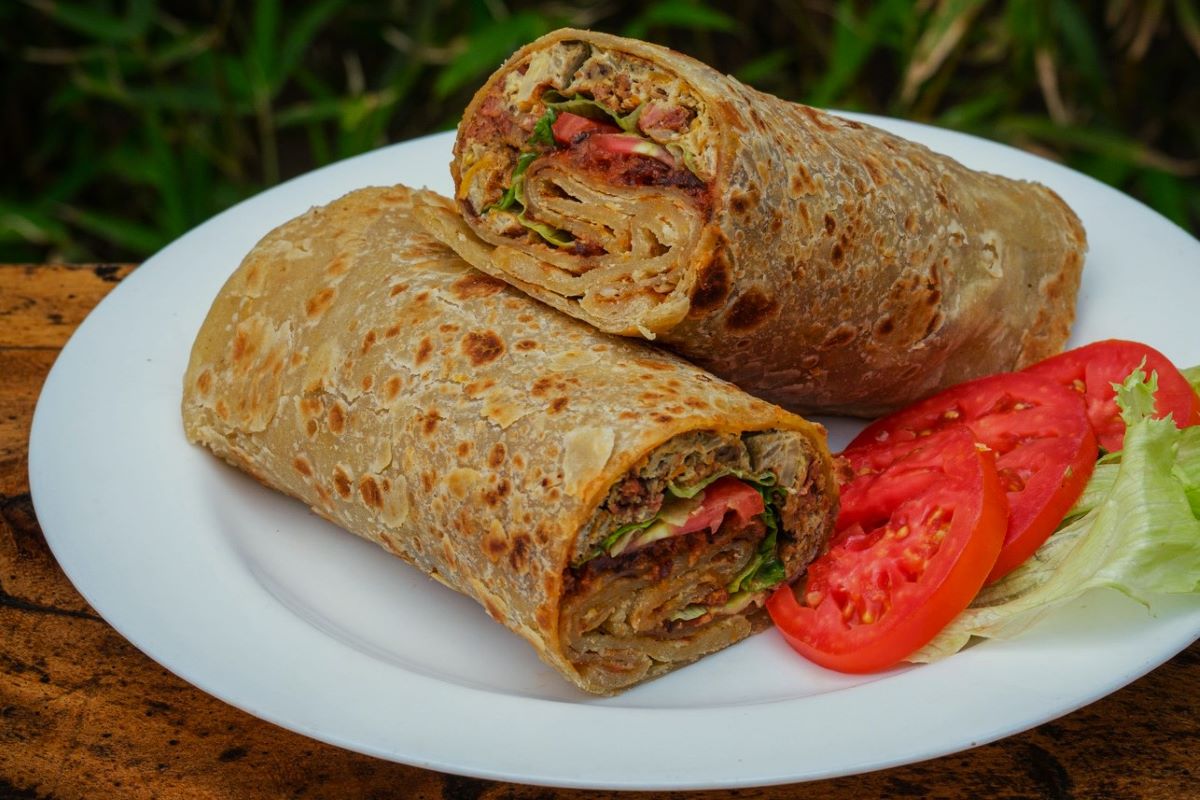
On the bustling streets of Kampala, as the sun begins to set and the air fills with a golden glow, something magical sizzles on roadside pans. It’s not just food—it’s a cultural staple, a culinary identity, and a symbol of creativity. Meet the Ugandan Rolex.
Despite its name, the Rolex isn’t a luxury watch. It’s a delicious street food delight. The name “Rolex” is a playful twist on “rolled eggs”, perfectly describing what it is: a flavorful omelet rolled inside a soft chapati. Watching a vendor craft a Rolex is part of the experience—skillful, quick, and mesmerizing.
Origins of the Ugandan Rolex
The Rolex first appeared on the streets of Kampala, Uganda’s capital, as a solution for busy university students. They needed a fast, affordable, and filling meal, and street vendors answered with a creative combo: eggs and vegetables cooked into an omelet, rolled inside chapati.
Its popularity quickly grew beyond students. Today, the Rolex is a national favorite, found on street corners, marketplaces, and busy urban centers across Uganda.
What’s in a Rolex?
A traditional Ugandan Rolex includes:
-
Chapati: Soft, slightly chewy flatbread, cooked on a griddle.
-
Omelet: Beaten eggs mixed with chopped tomatoes, onions, and cabbage.
-
Seasoning: Simple salt and spices enhance the natural flavors.
-
Optional extras: Avocado, sausages, or minced meat for extra flavor and protein.
Simple, flexible, and delicious at any time of day, the Rolex remains a staple street food that costs only a few Ugandan shillings.
Crafting the Perfect Rolex
Ingredients:
For Chapati (makes 2-3):
-
2 cups all-purpose flour
-
½ tsp salt
-
¾ cup warm water
-
1 tbsp oil (for dough)
-
Extra oil for frying
For Omelet (per Rolex):
-
2 eggs
-
1 small tomato, finely chopped
-
¼ onion, finely chopped
-
¼ cup shredded cabbage (optional)
-
Salt to taste
-
Black pepper or chili (optional)
-
1–2 tsp oil for frying
Method:
-
Heat the pan and crack eggs, mixing in vegetables.
-
Cook until golden and fragrant, forming the omelet.
-
Warm the chapati until soft and slightly crisp.
-
Roll the omelet inside the chapati.
Vendors often add creativity—avocado, cheese, or even the Titanic Rolex, a super-sized version for two!
A Cultural Symbol
The Ugandan Rolex is more than street food. It’s the clatter of pans at sunrise, the laughter of students around a food cart, and the warmth of shared culture rolled into chapati.
Next time you’re in Uganda—or in your kitchen with eggs and flour—roll up a taste of East Africa. After all, some of the best things in life are meant to be rolled, not worn.
Fun Fact: The Guinness World Record for the largest Rolex ever made weighed over 200 kilograms—now that’s a breakfast for the ages!



